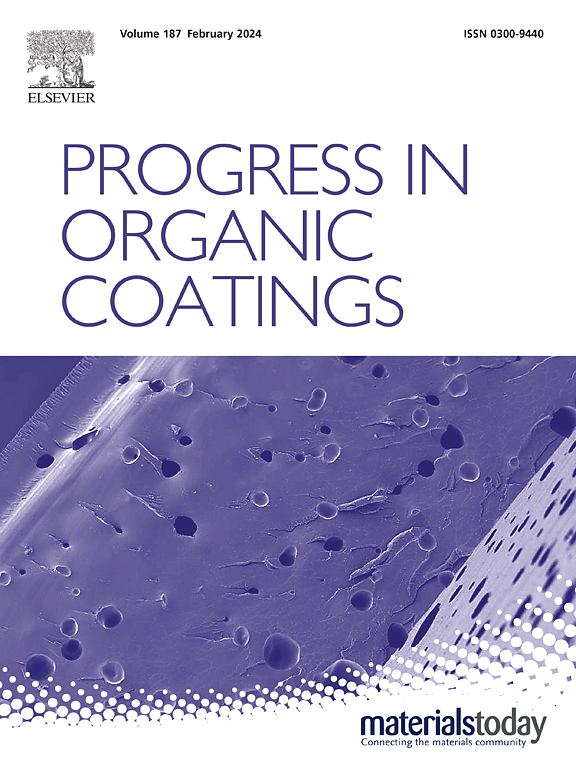Functional group activation and coupling agent migration induced by plasma treatment in adhesive for enhanced toughness of metal-composite joints
IF 6.5
2区 材料科学
Q1 CHEMISTRY, APPLIED
引用次数: 0
Abstract
Commercial adhesive paste was additionally activated using low-power oxygen-containing plasma with different plasma exposure durations to investigate its interfacial bonding contribution in adhesively-bonded Aural-5/CFRP-PA6 double cantilever beam (DCB) joints with plasma-treated adherends. The plasma-treated adhesive showed enhanced functional peak intensities in Fourier transfer infrared spectroscopy (FTIR) as plasma exposure time was increased, and some degree of oxidation was also detected via X-ray photoelectron spectroscopy (XPS). A small molecule, dicyandiamide (coupling agent) in adhesive was migrated to adhesive layer, where double concentration of coupling agent was detected after 10 min of plasma treatment. As a result, characterization of the adhesive/CFRP-PA6 interface after DCB fracture showed additional chemical bonds formed through amine-initiated epoxy ring opening polymerization, as well as amide bonds and ester bonds. These additional bonds at the adhesive/CFRP-PA6 interfaces led to significantly increased failure extensions and fracture energies of the joints as the plasma exposure time on the adhesive increased, compared to the joints with plasma-treated adherends but non-plasma-treated adhesive as commonly seen in the literature.
求助全文
约1分钟内获得全文
求助全文
来源期刊

Progress in Organic Coatings
工程技术-材料科学:膜
CiteScore
11.40
自引率
15.20%
发文量
577
审稿时长
48 days
期刊介绍:
The aim of this international journal is to analyse and publicise the progress and current state of knowledge in the field of organic coatings and related materials. The Editors and the Editorial Board members will solicit both review and research papers from academic and industrial scientists who are actively engaged in research and development or, in the case of review papers, have extensive experience in the subject to be reviewed. Unsolicited manuscripts will be accepted if they meet the journal''s requirements. The journal publishes papers dealing with such subjects as:
• Chemical, physical and technological properties of organic coatings and related materials
• Problems and methods of preparation, manufacture and application of these materials
• Performance, testing and analysis.
 求助内容:
求助内容: 应助结果提醒方式:
应助结果提醒方式:


